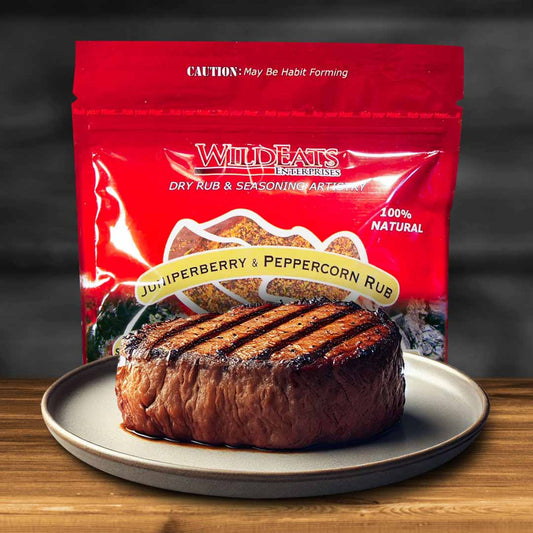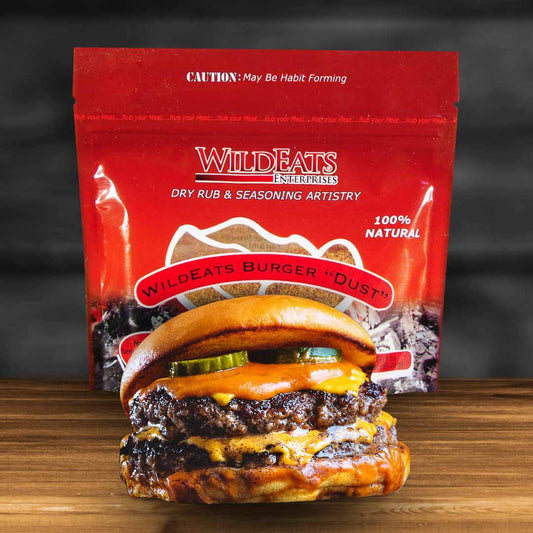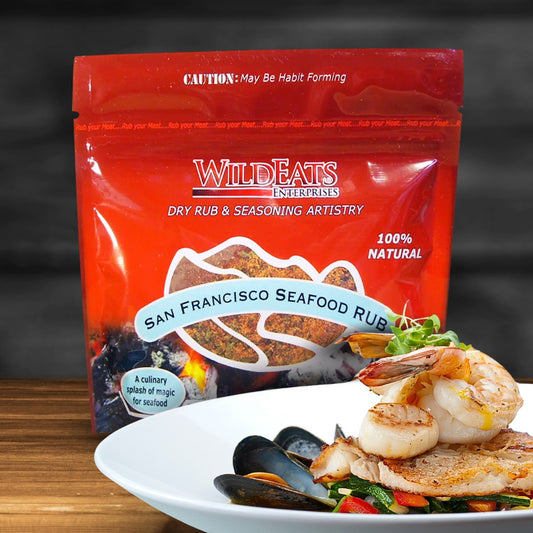The Why’s and How’s of Dry Aging
by Chef John McGannon
I can’t begin to tell you how many people have asked me, “How do I get rid of that gamey taste in my ducks, geese, venison, elk, caribou, moose, boar, etc.? And why does it always come out tough?” Well, we can address both issues at one time.
We need to understand that most wild birds and big game animals are the equivalent of Olympic athletes. They fly thousands of miles during migration or run up and down 10,000-foot mountains for a living. Mature game animals are usually tremendous physical specimens. The only way to break down the structure of their muscles and make the meat tender, without resorting to meat hammers and artificial tenderizing agents, is to give nature time to do its work (at temperatures that discourage bacterial activity). This whole process is referred to as “dry aging.”
The finest restaurants in the world dry age their beef for 28 days. These animals haven’t even broken into a trot no less endure what wild game animals do. It is complete over kill for the beef products BUT it is the ONLY way you can break down the high intense fiber structure in the muscles of game animals. Additionally, these game animals have twice the amount of capillary blood that do domestic animals. This excess blood allows them to fly those long migrations and the big game animals to run up and down escaping predators. The excess blood supplies the heart and lungs with the needed oxygen. This process is called re-oxygenation. Very good for the animals Not so good for us because the capillary blood and all creatures is the broken down by product of what they have consumed. So, if you’re a deer eating sage on the hillside, and you consume that flesh in this saturated state it’s going to taste like the side of that hill. Equally if you eat a duck or goose in a fresh state and that creature was eating aquatic plant life out of a muddy slough then its going to taste like the bottom of a muddy slough. When in fact its not the mud its excess capillary blood.
Dry Aging has a two-fold benefit, first by getting rid of the blood you lose the muddy gamey flavor. At the same time, you’re evaporating the internal moisture. Without those two liquid properties the fiber structure of those highly developed muscles breakdown and become tender.
Most of us don’t have the perfect aging facility, so we leave that to the butcher or the outfitter—or just hang our meat at camp and hope it stays at the right temperature long enough to achieve a proper dry age. These situations are often volatile and do not produce the desired results,
You can introduce dry aging at any time. Whether it’s from the field or the freezer. Ideally you want to dry age your meat is as close to it’sits natural form as possible - whole ducks with the skin on and preferably quarters for big game. As I mentioned you can dry age smaller cuts like muscle groups but the smaller the cut the less time you should dry age otherwise you will have a greater amount of trim and waste. Below is a guideline for how long you should dry age your meat.
The WILDEATS DRY AGING TIMELINE
This IS Always DONE UNDER REFRIGERATION,

At temperatures below 40°F
(Frozen meat products are not dry aging)
BIRDS
These birds have been plucked and eviscerated with the internal cavity wiped clean. You can initiate drying from a fresh state as well as after it has defrosted from the freezer. These timelines start when the meat is completely defrosted.
Dry Aging breasted out birds without any skin/bones to slow the drying process DO NOT APPLY to this timeline. You can dry age those pieces of meat to a certain degree BUT since the meat will dry out too quickly, you will loose a great deal of meat in the process. This is a slow and gradual process. You get out what you put in. Breasting is a fast and easy way to avoid plucking and cleaning but like most shortcuts comes with a price.
UPLAND BIRDS
Quail 1 day
Chukar/Partridge 2 days
Grouse 2-3 days
Pheasant 2-3 days
Wild Turkey 3-4 days

These are recommended times for whole birds with the skin attached. The skin plays a vital role in slowing down the evaporation process. As I stated before Dry Aging needs to be a slow and gradual process. If the meat dries out too fast, then you aren’t accomplishing your goal of breaking down the fiber structure. You see those little tough fibers need time to breakdown as they are drying.
Planted birds require a little less time, as their muscle structure isn’t so developed.
RED MEAT BIRDS
Doves 1 day
Band-tailed pigeons 1-2 days
Teal (sm. ducks) 2-3 days
Widgeon (med. ducks) 2-5 days
Sprig/Mallards (lg. ducks) 5-7 days
Specks/Snow Geese 7-10 days
Honkers* 10-14 days
Aging these very tough birds for this long will give you an incredible tender result. Once aged bone-out the breasts and treat as though they were a tender steak. Cook quickly and rare. Save the legs for chili, stew or sausage. You won’t believe how tender they can be if you have the patients!
LARGE GAME ANIMALS
Elk, Moose (quarters) 21 days
Elk, Moose (muscle groups, i.e. top sirloin) 7-10 days
Deer, Caribou, Sheep, Antelope (quarters) 10-14 days
Deer, Caribou, Sheep, Antelope (muscle groups) 7-10 days
Wild Boar (quarters) 8 days
Wild Boar (muscle groups) 4-8 days
Bear**8-10 days

35 day dry aged Bison =









